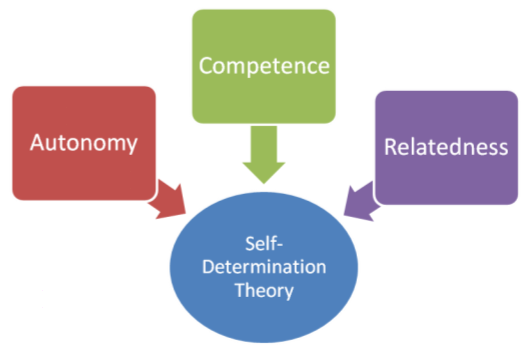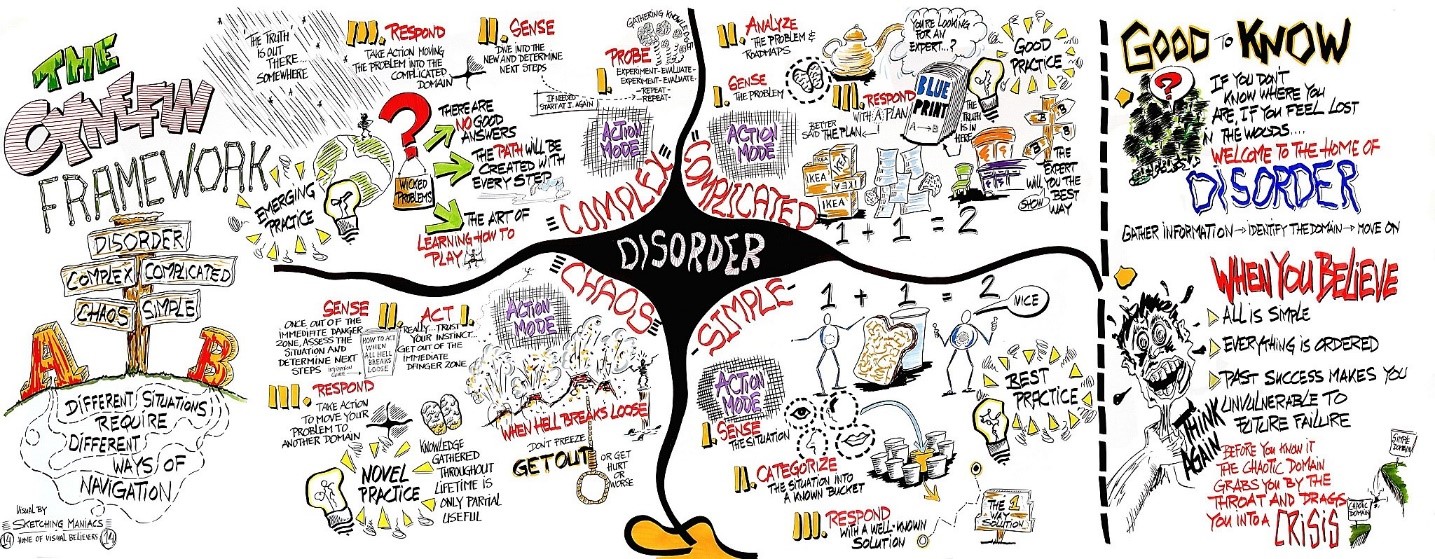Engendering intrinsic motivation in students when it comes to higher education assessments is always complicated and it is hard to pinpoint one particular approach which can be applied across the board. There are some ways of thinking about assessment that can be helpful though. The realm of digital education affords us different flexibility in exploring these ideas.
The old Ryan and Deci, see
Self-determination theory applied to ‘authentic’ assessment design is something that has particularly piqued my interest recently. Like most theories of motivation, it has a history and is not without flaws, but still remains a powerful way to understand how we fulfil our basic psychological needs, not only as students, but as human beings.
I’ve been fortunate enough in my role as Learning Designer to attend three quite different iterations of the same PD presentation put forth by a former colleague. Basically, each looked at how ‘authenticity’ in assessment could be designed by considering the three regions of Self-Determination Theory: Autonomy, Relatedness and Competence. Where I have questioned them is in whether some types of assessments are inherently less authentic than others. Surely the experience a student brings to an assessment is what determines whether an assessment can be considered truly authentic? We also problematised the use of the term ‘truly authentic’ for the same reason that it logically forms as dichotomy between ‘authentic’ and ‘inauthentic’ assessments. ’nuff said.
Image by Christina Donelly, Jtneill [CC BY 3.0], via Wikimedia Commons
Cynefin assessment, complex loves complicated
One way I thought of getting around the dichotomy is by looking at assessments through the lens of the Cynefin Framework to see them on a plane ranging from complex to obvious. Here what has been termed ‘authentic’ assessment occupy the varying domains of complexity and complicatedness while ‘less authentic’ assessments can be thought of in the simple or obvious domain. Again, this can seem like I’m forming a binary stance between one side of the framework and the other. In fact some assessments are going to fall into the obvious domain, some may even have qualities of the chaotic, but our task as educators is to determine which assessment applies to which context.
Part of the reason to avoid assessment which sit in the simple/obvious domain is that they don’t always reflect the complexity of the world which we’re preparing students for. They also run the risk of slipping off the obvious cliff ledge into chaos as students who don’t see the value in such assessments opt to settle for a simple way around doing a task they consider meaningless. Unfortunately, contract cheating or other forms of plagiarism may be that obvious answer.
Image by Edwin Stoop (User:Marillion!!62) [CC BY-SA 4.0], via Wikimedia Commons
A complex assessment requires the application and emergent formation of students’ knowledge, not just its recall or categorisation, for an audience beyond the academic sphere in a reflection of how their learning might be utilised in their careers. Often these are called ‘real-world’ experiences. But in a complex authentic activity the products which students devise have a self-evident value and an assessment may be easily incorporated into the tasks.
There are three areas which can be considered in developing an assessment task with Self-determination Theory in mind:
Choice or control
(autonomy): creativity in the task
This might involve self-designed assessments and assessment criteria or simply the openness for students to apply their own experience to the task. Designing an assessment for future use, such as a web-based learning resource that they can access in the field, ensure that authentic professional tools have a life beyond the assessment itself. If students can relate their effort in completing a task to the world outside the university, they will be more willing to take ownership and direct themselves towards completing the assessment, in some cases this has involved considerable more time than expected by their instructors. Once students find a meaningful purpose for their assessment it starts to take on a life of its own. Particularly with projects that allow for digital creativity and multi-modality. The open digital realm means that a social project documenting the oral history of people living in remote areas doesn’t just remain an artefact in the history or anthropology sector, but can actually be used by the very people it documents and has a much wider audience.
Support or reassurance
(relatedness): structure of timetables, staged structure of the task
One of the most long-standing metaphors of teaching is scaffolding and breaking up the task. Many assessments that have been the subject of case studies for authenticity are run in later years of study. In some cases the stages of the assessment, for example ‘project pitch’ up to ‘reflection’, are spread out over the entire semester and are carefully monitored by tutors to ensure the right support is offered. This reassurance can also occur through a mix group work with individual assignments which feed off each other. However, for first year students a large project may be daunting and so smaller authentic elements can be worked into already established assessments. Incorporating digital spaces such as Minecraft into the assessment can enable aspects of authenticity to bleed through since Minecraft servers can be opened to people outside an institution and videos of their work can be shared publicly on video sharing platforms. I’ve also encouraged some academics to explore mentoring through digital spaces, where senior students can support their juniors in a variety of ways, from academic literacy support to figuring out better study habits.
Responsibility or challenge
(competency): someone else will read it, realistic clients
Is there an audience for this work beyond the teacher? An example could be a film review posted to an established public website. The maintenance of a public blog that students can share with their classmates but also their family, friends and potential employers has a quality of authenticity. It also engenders motivation to impress the general public with what you are learning. This also opens the content of tertiary courses up to the public consciousness. Other cases where this has been a success include the DS106 course/platform where people from anywhere can take the same assessments that those enrolled in the program are taking. Moreover, students can devise their own creative tasks and assessments to share with the community.
The role that the digital world can play in helping to build authenticity into tasks and assessments should not be understated. With this in mind I’ve become keenly interested in the idea of Jim Groom’s Reclaim Hosting project to allow students and staff to create their own online spaces. A place to share their work and own their digital identity, that could help them find long-term employment both within and outside the university. In correspondence with Jim, he has also been keen to explore the possibilities of Reclaim Hosting supplementing the LMS.
When an assessment is designed to allow for students to have a wide audience for their work the feedback may occur in a number of ways. In the case studies which I’ve looked at, it has often involved formative feedback from an industry professional, but also feedback from those for whom it is designed. For example, a web-based resource for teachers can be used by teachers in the field, and their experiences using it can form part of the feedback.
Digital rubrics either written by teachers into the LMS or designed through another tool can assist in more uniformity and detail in marking and feedback, with the provision that we don’t only give feedback from the rubric but rather use it as a jumping off point. In the same way, the criteria that has been developed to assist teachers in designing ‘authentic’ tasks can also be used for feedback in the further development and design of complex assessments.
References:
- Hendry, G. D., Baker, E., & McDonnell, M. (2017). Integrated authentic assessment design for motivation and quality learning. Paper presentation at the 17th European Conference for Research on Learning and Instruction, August 29-September, Tampere, Finland.
- Hendry, G. D., Baker, E., & McDonnell, M. (in preparation). ‘It’s not like writing an essay’: Students’ motivational experience of authentic assessment design.


